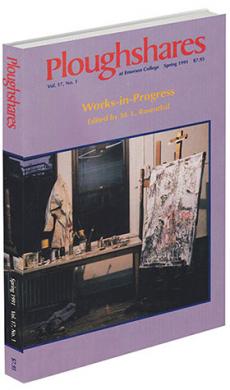rev. of When One Has Lived a Long Time Alone by Galway Kinnell
Galway Kinnell surely possesses the most lyrical voice of his generation; perhaps only the last books of James Wright approached the intensity of music Kinnell builds from "the noise inside things," whether a factory whistle "in concert with the tenor of stomachs" of workmen, or the "slub clump slub clump" of a bricklayer's trowel ("The Tragedy of Bricks"). Both pastoral poet and urban observer, Kinnell has never flinched from descending to the dark center where earthly and otherworldly matters commingle: in nightmares, in the politics of justice implicit in God's law, in family and sexual love. With his tenth collection of poems, Kinnell sings the isolate self, witnessing rejection, disappointment, and the shadow of death.
Structured like the journey of that other singer, Orpheus, the book begins with ". . .the heaven of childhood," which quickly ". . .droops down into the golden ringlet / of hell" ("Judas-Kiss"). Death and love balance and spar; illness and loss accrue until, at the book's center, the speaker vows, "I don't want to die. / I want to be reborn" ("The Ceiling"). The process of rebirth revealed in the final, title poem — a series of eleven thirteen-line poems that cunningly defeat any expectations of a sonnet by their circularity — is offered in the figure of lovers who "blether the song that is both earth's and heaven's," standing "in a halo of being made one," In one line, Kinnell joins animal, human, and angelic kingdoms; in the next, he blesses them. Orpheus triumphant has managed to retrieve Eurydice after all. —
Joyce Peseroff

